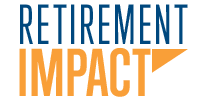Recap: Navigating Social Security Webinar 2/15/2023
Are you approaching retirement age or looking to learn more about Social Security? Understanding how this government program works is crucial for securing a stable financial future. In a recent talk, Eric Lazzari and Kelly Hahn provided valuable insights into Social Security and its benefits.
Kelly Hahn provided an overview of the basics of Social Security, including how benefits are calculated, the strategy of when to claim, and the future of Social Security. She discussed how Social Security is taxed and the different claiming decisions for own, spousal, and survivor benefits. The government is more flexible in terms of what to claim and when for survivor benefits, and it pays off to claim later for higher earners.
Hahn also highlighted that there is an earnings test that applies if you are claiming Social Security benefits before full retirement age and you are working. Therefore, it’s essential to consider the expected rate of return on your portfolio and expected longevity to determine when it pays off to claim Social Security.
The future of Social Security is also a topic of concern for many people. Hahn explained that Social Security payments are funded by taxes, and the trust fund is expected to be depleted by 2035. However, she reassured the audience that Congress is unlikely to cut benefits for current retirees.
In conclusion, understanding Social Security is critical to your financial future. As you approach retirement, it’s essential to consider your options for claiming benefits and to understand how Social Security fits into your overall financial plan. Keep in mind that the rules for Social Security are complex, and it’s worth seeking professional advice to ensure you make the most of your benefits.


